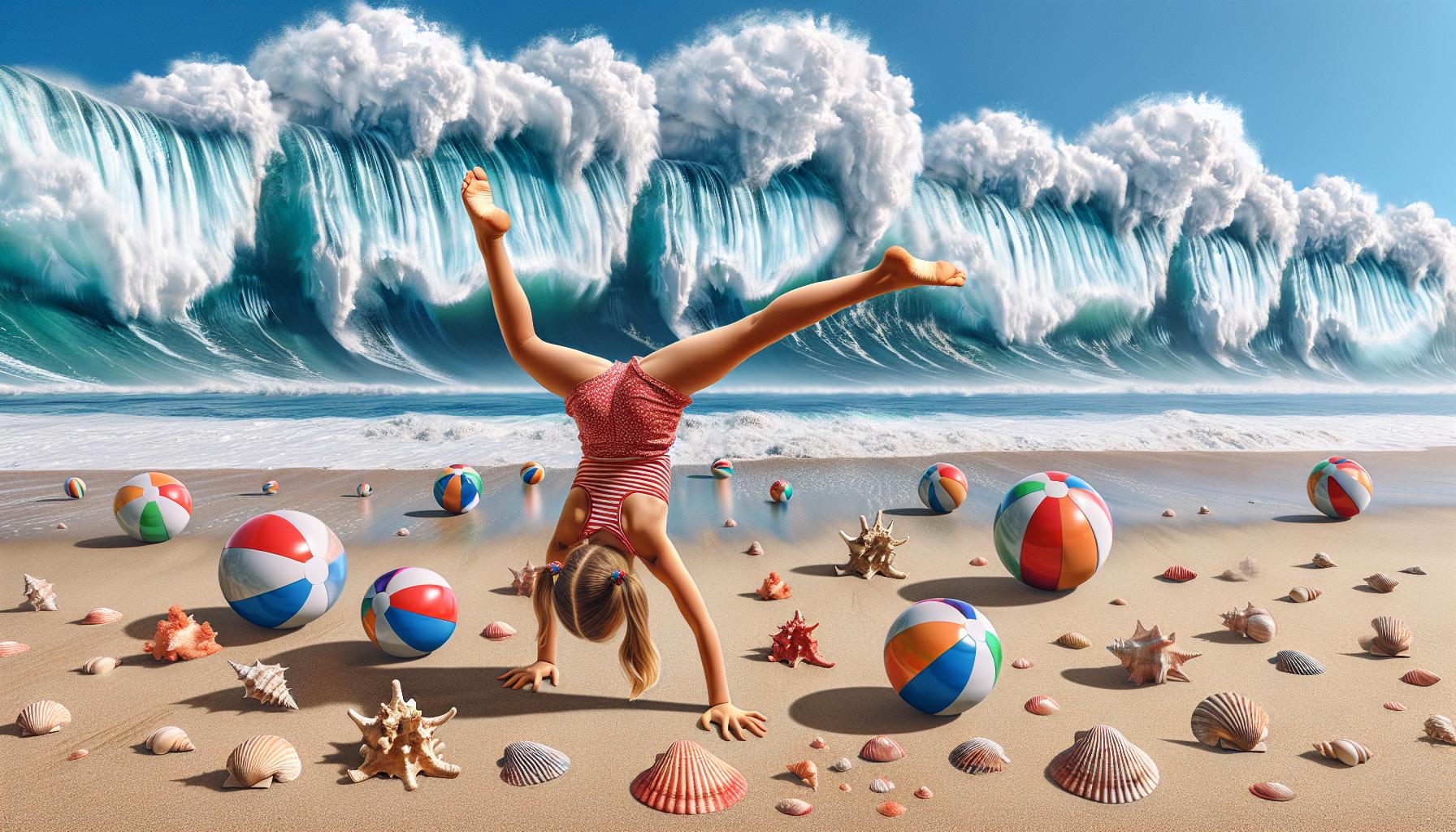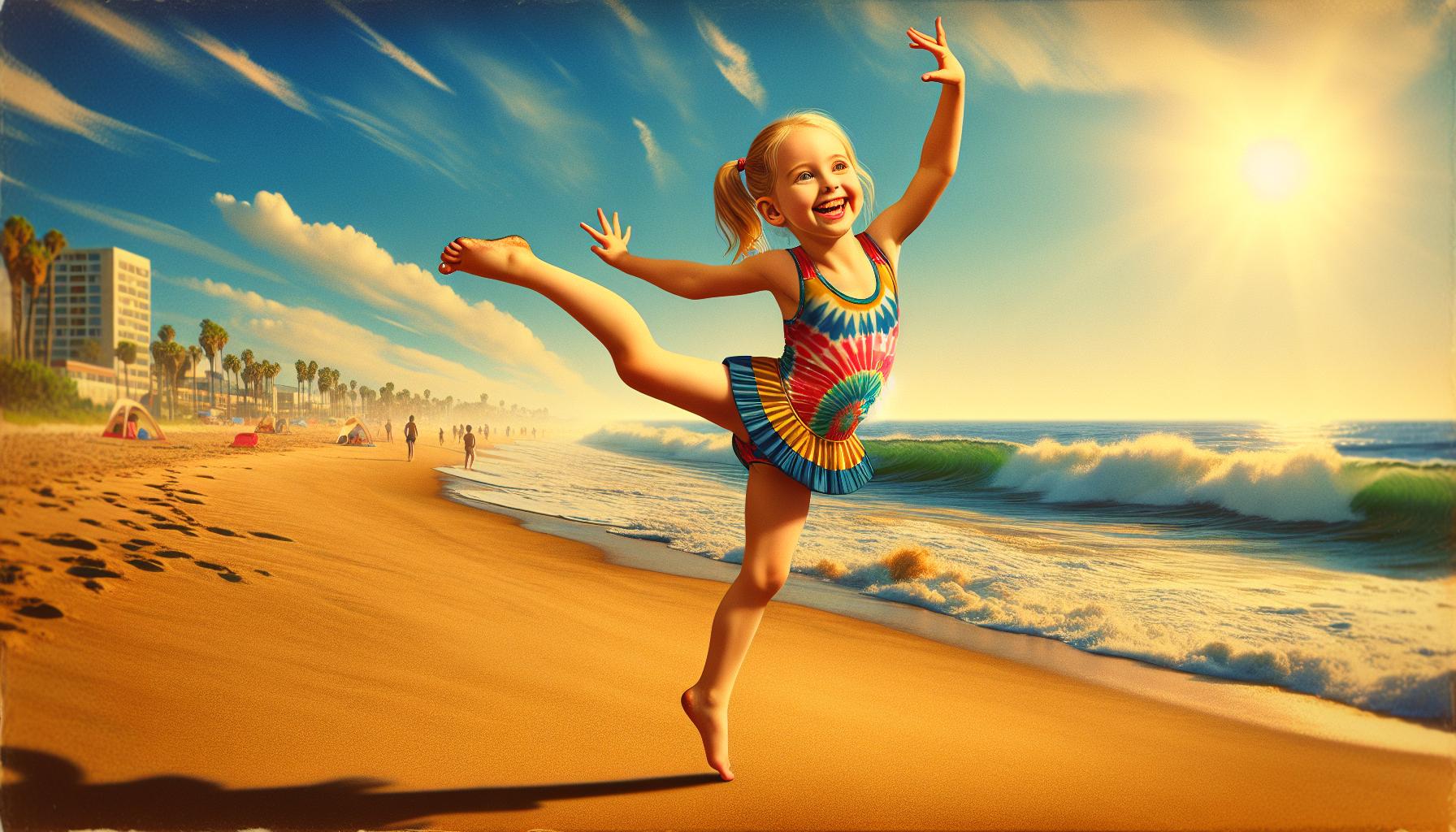Capturing life’s most playful moments through the lens takes on a whole new perspective when little ones decide to turn their world upside down! Beach photography gains an extra sprinkle of magic when adventurous girls flip, cartwheel and handstand their way across the sandy shores.
These whimsical upside-down shots have become increasingly popular on Dreamstime, where photographers showcase their creative takes on childhood beach adventures. There’s something uniquely captivating about seeing the world from an inverted viewpoint – where the sky becomes the ground and smiles appear even more delightful when they’re flipped. Professional photographers and parents alike are discovering that these quirky poses create unforgettable memories while adding a dash of personality to traditional beach portraits.
Dreamstime Upside Down Cute Little Girl Beach Photography
Dreamstime photographers create captivating beach portraits by combining technical expertise with creative composition. The platform’s extensive collection showcases innovative approaches to capturing children’s natural playfulness at the beach.
Capturing Playful Upside Down Poses
Little girls performing cartwheels generate dynamic beach portraits with flowing hair framing their expressions. Photographers position themselves at ground level to capture the complete range of motion during handstands or flips. The optimal shooting angle aligns with the subject’s face while inverted, creating eye contact that draws viewers into the image. Fast shutter speeds of 1/1000 sec or higher freeze motion while maintaining sharpness. Camera settings include:
| Setting | Value |
|---|---|
| Shutter Speed | 1/1000+ sec |
| Aperture | f/5.6-f/8 |
| ISO | 100-400 |
Lighting Techniques for Beach Photography
Golden hour lighting creates warm tones ideal for beach portraits 1-2 hours before sunset. Photographers use reflectors to fill shadows on subjects’ faces during midday shoots. Overcast conditions produce soft diffused light perfect for capturing detail in upside-down poses. Key lighting considerations include:
| Time of Day | Lighting Effect |
|---|---|
| Golden Hour | Warm directional light |
| Midday | Harsh contrast |
| Overcast | Soft diffusion |
Photographers position subjects with the sun at 45 degrees for dimensional lighting that highlights movement patterns in hair sand.
Essential Camera Settings and Equipment
Capturing upside-down beach portraits requires specific camera gear and optimal settings to freeze dynamic movements while maintaining image quality. The right combination of equipment and technical knowledge enables photographers to document these playful moments effectively.
Best Lenses for Beach Portraits
A 24-70mm f/2.8 lens offers versatile focal lengths for capturing both wide environmental shots and intimate portraits on the beach. Prime lenses like the 50mm f/1.8 excel in low-light conditions during golden hour sessions. A 70-200mm f/2.8 telephoto lens creates beautiful background compression while maintaining a comfortable shooting distance from active children. Weather-sealed lenses protect against sand and moisture damage. UV filters safeguard front lens elements from salt spray exposure during beach photography sessions.
Working With Natural Light
Early morning light (6-8 AM) creates soft shadows ideal for capturing upside-down beach poses. Side lighting at 45 degrees highlights muscle definition and adds depth to gymnastic movements. A silver reflector bounces light into shadowed areas when shooting during mid-morning hours (8-10 AM). Placing subjects with their backs to the sun produces rim lighting that separates figures from bright sand backgrounds. Scattered clouds diffuse harsh sunlight creating even illumination across inverted poses. Shoot in RAW format to preserve highlight details in bright beach conditions.
Creating Fun and Dynamic Beach Compositions

Beach photography comes alive through creative compositions that capture the energy of upside-down moments. Photographers combine technical skills with artistic elements to create memorable images that showcase children’s playful beach activities.
Using Props and Beach Elements
Natural beach elements enhance upside-down photographs with texture depth. Sand castles create foreground interest when positioned strategically near flipping subjects. Colorful beach balls add visual contrast while complementing the subject’s movements. Seashells scattered in patterns create leading lines that draw attention to the inverted poses. Beach umbrellas provide framing elements alongside cartwheeling subjects. Ocean waves contribute dynamic background motion when timed with handstands.
Finding the Right Background
Clean backgrounds eliminate distracting elements from upside-down beach portraits. Open stretches of sand provide minimalist settings that emphasize gymnastic movements. Breaking waves create dramatic backdrops during golden hour photography sessions. Rock formations offer natural framing opportunities for handstand compositions. Palm trees introduce tropical elements while maintaining visual balance. Photographers position subjects away from busy beach areas to maintain focus on inverted poses. Cloudy skies produce even lighting that complements upside-down silhouettes. Ocean horizons establish strong compositional lines when aligned with cartwheeling subjects.
Safety Tips for Photographing Children at the Beach
Beach photography sessions require specific safety protocols to protect children during upside-down poses. Photographers maintain continuous communication with parents throughout the session, ensuring they remain within arm’s reach of their children.
Clear boundaries establish safe shooting zones away from incoming waves, steep drop-offs or rocky areas. A designated spotter monitors wave patterns while the photographer focuses on capturing dynamic moments.
Essential safety measures include:
- Checking the beach conditions for hazards like sharp shells or debris
- Setting up photography areas on firm, level sand
- Keeping sessions under 30 minutes to prevent fatigue
- Ensuring children wear appropriate sun protection
- Scheduling shoots during cooler times of day
- Maintaining hydration with water breaks every 15 minutes
Equipment positioning creates additional safety considerations:
- Place camera gear on elevated surfaces away from sand spray
- Keep lighting equipment secured against wind gusts
- Position reflectors at least 6 feet from active shooting areas
- Store backup batteries in waterproof containers
Proper spotting techniques for action shots:
- Two adults minimum for spotting cartwheels
- One spotter per side for handstands
- Parent assistance for any inverted poses
- Quick release signals to stop activities
Weather safety protocols include:
- Monitoring local weather reports before sessions
- Checking UV index levels (ideal range 2-5)
- Testing sand temperature (max 85°F)
- Watching for approaching storms
- Having a backup indoor location identified
These protocols enable photographers to capture creative upside-down beach portraits while prioritizing child safety. Each safety measure integrates seamlessly into the photography workflow without compromising image quality or artistic vision.
Post-Processing Beach Portraits
Post-processing transforms raw beach portraits into polished, professional images that capture the dynamic energy of upside-down movements. The following adjustments enhance the visual impact while maintaining natural-looking results.
Color Correction and Exposure Adjustments
Color correction in beach portraits starts with white balance adjustments to neutralize any unwanted color casts from sand reflections or atmospheric conditions. RAW files allow precise control over temperature settings, typically requiring adjustments between 5500K-6500K for optimal skin tones. Exposure corrections focus on preserving highlight details in bright sand areas while maintaining shadow detail in upside-down poses.
Key adjustments include:
- Reducing highlights (-15 to -30) to recover detail in bright sky areas
- Lifting shadows (+10 to +25) to reveal details in darker areas of hair movement
- Adjusting vibrance (+5 to +15) to enhance beach colors without oversaturating skin tones
- Fine-tuning contrast curves to maintain separation between subject motion elements
Beach-specific color considerations:
- Deepening blue tones in ocean backgrounds
- Warming sand colors for golden-hour effects
- Preserving natural skin tones during cartwheel movements
- Balancing green tints from underwater reflections
These adjustments create clean, crisp images while maintaining the authenticity of beach lighting conditions.
Capturing upside-down beach photography of children requires a perfect blend of technical skill creative vision and safety awareness. These whimsical shots on Dreamstime showcase the pure joy and playfulness of childhood while creating lasting memories for families.
With the right equipment proper lighting techniques and careful attention to composition photographers can create stunning inverted portraits that stand out in their portfolios. The key lies in maintaining a balance between artistic expression and child safety all while preserving the natural spontaneity of beach moments.
Success in this niche comes from understanding both the technical aspects of beach photography and the unique challenges of working with young subjects in dynamic poses. Through careful planning and execution photographers can create captivating images that celebrate the carefree spirit of childhood at the beach.

